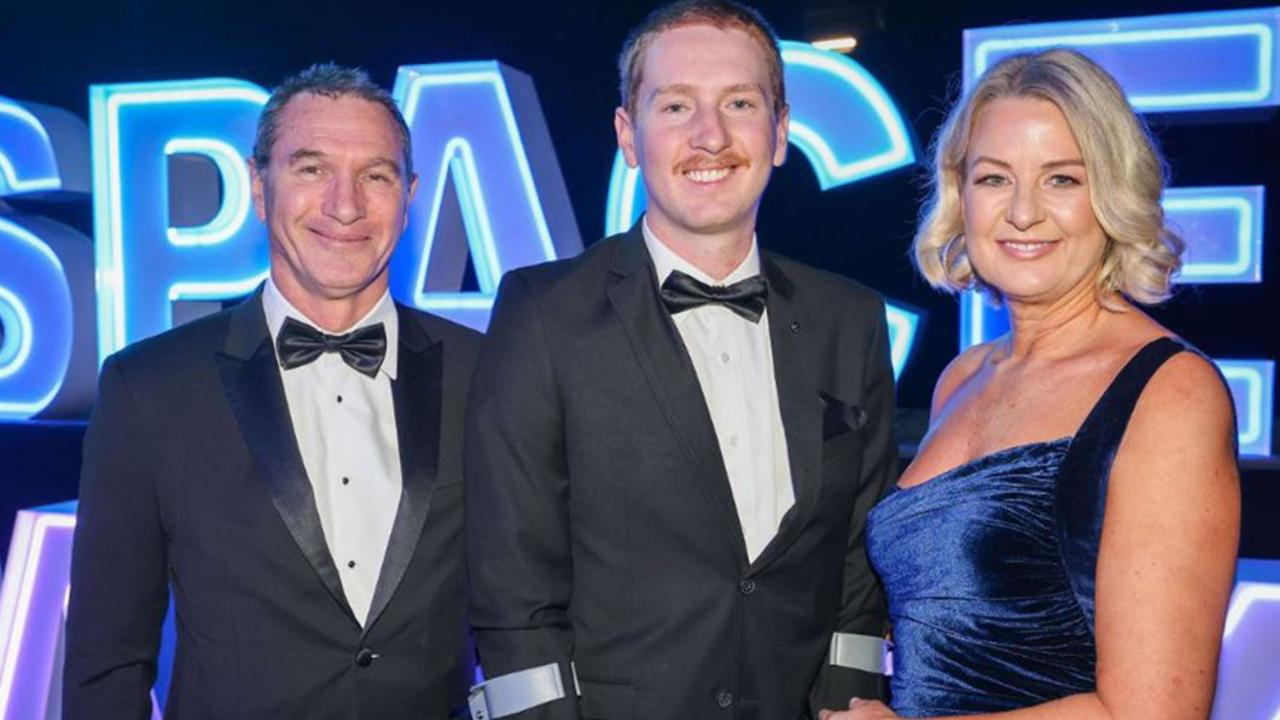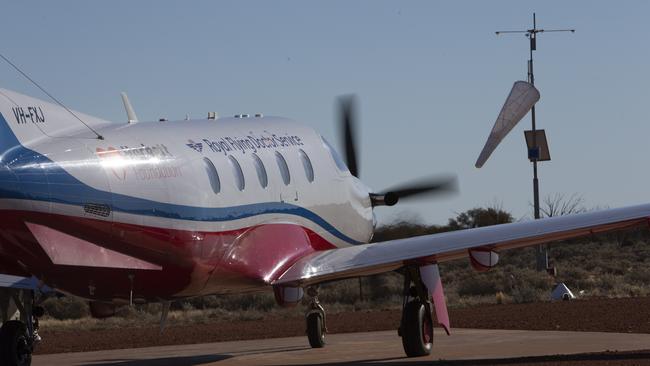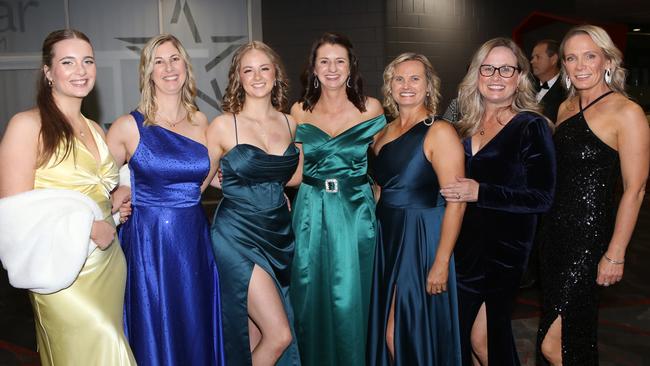Royal Flying Doctor Service’s Port Augusta plans can’t fly alone | Jess Adamson
Shocking stats reveal just how badly the RFDS’s plans for Port Augusta are needed, writes Jessica Adamson.
Opinion
Don't miss out on the headlines from Opinion. Followed categories will be added to My News.
At 9.45pm at the Adelaide Entertainment Centre on Saturday night, you could have heard a pin drop.
Which was odd, given 1004 people had donned their black tie for the annual Royal Flying Doctor Service Wings for Life Gala Ball. The Ball sold out within 24 hours. It was the biggest crowd in the event’s history and the Adelaide Entertainment Centre was rocking.
As far as charity events go, it’s one of the most spectacular events on the calendar and as a proud ambassador of the RFDS, it’s one that’s particularly special to me.
It’s a let your hair down kind of a night and Saturday night was no exception.
At least half the crowd was on the dance floor before the entrée plates had even been
cleared, including Her Excellency, our most excellent Governor, and husband Rod.
But when Stuart and Mel Orr took to the stage there was absolute silence.
They know first-hand how vital the RFDS is to all Australians, no matter where we live, work or play.
Four months ago, their 22 year old son Louis was involved in a terrible accident on a cattle station in the Northern Territory.
On a day off, the gutsy young station hand was skiing on the station’s lake, when he hit the water hard, snapping his left leg.
900 kilometres and 11 hours by road to the nearest trauma hospital, and with Louis in excruciating pain, his mates called the Flying Doctor.
A response-ready aeromedical crew comprising the RFDS and an NT Health specialist was dispatched. They quickly realised he needed to be evacuated for a CT scan and minutes later, Louis was in the air, on the way to the nearest major hospital in Alice Springs.
In Alice, the worst was confirmed. Louis’ bone fracture had crushed a major artery, ruptured ligaments and nerves and stopped vital blood flow to his lower leg.
He needed to get to Darwin for emergency surgery – or risk having his leg amputated to save his life. There wasn’t a moment to lose, and once again, the Flying Doctor was there, airlifting Louis to Royal Darwin Hospital.
The pilot had only minutes to get off the ground in Alice if they were to make it to Darwin in time for critical surgery. Every second counted.
Louis’ parents Mel and Stuart were in Queensland, enjoying their first family holiday in three years, when they received the phone call that every parent dreads.
Imagine how helpless they felt. Their son’s life was in danger but they couldn’t get to him in time.
Fighting back tears on Saturday night, they told the hushed guests about that dreadful call.

“We couldn’t think straight, we didn’t know what to do or how to react,” Mel said.
“Stuart was trying to hold it together for both of us, but I know we were both counting the hours since his accident thinking, ‘what if the surgery isn’t successful’?
“We were relying on someone else to save our son, our boy, who still had his whole life ahead of him.”
The Royal Flying Doctor Service – and the vascular surgeons at Royal Darwin – saved Louis and his leg.
And on Saturday night, he walked on to the stage, aided by Chantelle King, the RFDS flight nurse who cared for him on that initial flight.
Leaning heavily on a pair of crutches, he told of his enormous gratitude.
“There’s no way I’d be standing here if my mates had to drive me 11 hours to get treatment,” he said.
“They would have given it a fair crack but that wouldn’t have been enough to save my leg and my life.
“It’s a long road ahead but I’m so grateful for the opportunity to get back to doing what I love – working in the agriculture industry in the outback.” He’s not there yet but hopefully, one day in the future he’ll be able to go back to work.
It’s amazes me that the RFDS airlifts someone, from the outback or one of our country hospitals, 23 times every day in South Australia and the NT, anytime of the day or night.
And 1 in 20 of those people have an Adelaide postcode.
I’ve had the privilege of meeting many people who owe their lives to the iconic service.

Like Shelley Hatch, a young Mount Gambier woman who went into labour at 24 weeks and was flown to the Women’s and Children’s. The retrieval team cranked the plane’s heaters up to the max, creating a flying humidicrib just in case the baby arrived mid-air. Little Charlie arrived less than an hour after they landed in Adelaide weighing just 600 grams. Now, he’s 5 years old and thriving.
And a young cystic fibrosis patient I met, soon after he received the phone call he’d been waiting years for. He was in desperate need of healthy lungs and at 3am, the Royal
Melbourne called to say they’d found a perfect match. But it was a race against the clock – no time to drive and no commercial flights at that hour. The only way was with the RFDS. It was a rough flight and bad weather almost forced the pilot to turn back. But they flew through it and the young man was able to receive the most precious gift of all.
It’s 95 years since the visionary John Flynn founded the Royal Flying Doctor Service.
Now, the RFDS has a new vision.
They’ve revealed plans for an $15 million Integrated Primary Health Centre at Port Augusta, at a time of critical need.
Our rural health services are in bad shape.
My country friends do not have the same level of medical care that I have living in the city. There is a desperate need for more rural doctors.
The RFDS Best for the Bush report released earlier this year revealed that if you’re a bloke living remotely, you’re expected to live almost 14 years less than a city dweller. If you’re a rural woman, it’s 19 years less. How is that acceptable in 2023?
Port Augusta’s 14,000 residents are currently waiting 6 weeks to see a GP and the local doctor workforce is ageing.
Dr Amanda Bethell has lived there for 11 years. In that time, she says the number of GPs in the town has halved.
“Over that time some of the clinics have closed, many of the doctors have moved away and the town has really struggled in recruiting new doctors,” she says.
“Some of the practices are saying ‘I’m sorry, we’re just not taking new patients.’ Patients have had to travel to other nearby towns and they’re saying ‘you’re not from our town.’
“So that leaves Adelaide, but there’s a whole bunch of people in Port Augusta who simply can’t afford that and so we’re seeing them in the emergency department.”
The new Centre, the nation’s first multidisciplinary primary health care service integrated with an undergraduate medical school, would provide GP and other specialised health services to the local community, managing 25,000 patient consultations a year.
It would be a rich training ground for GP registrars and medical and nursing students, with support from leading tertiary institutions.
Junior doctors would get experience that no city hospital could ever provide. And who knows, maybe they’d stay? That’s the aim. To build a future medical workforce.
The RFDS has bought the land in Port Augusta and consulted with the local community.
There’s only one thing missing – they need funding for the capital works, to bring their bold vision to life.
$15 million dollars isn’t a lot of money to help ensure equitable health care for an outback and regional community.
So how do we kickstart the fundraising effort?
I have no doubt our state’s major mining and pastoral companies would get behind a
support campaign to help out. They rely on the RFDS to be there 24/7. And if the State Government contributed $5 million, matched by the Feds, it would be a flying start.
Innovation is in the Flying Doctor’s DNA, and we must support their vision.
On Saturday night, 1004 people raised more than $290,000 – that money is critical in keeping RFDS planes in the sky.
Now it’s over to the Government, generous corporates and the rest of us to lock in our support.
Jess Adamson is an RFDS ambassador.






